What is a Galaxy?
Galaxy - A component of the Universe made up of gas and a large number (usually more
than a million) of stars held together by gravity. The two most common types of
galaxies are spiral and elliptical.
Spiral Galaxies
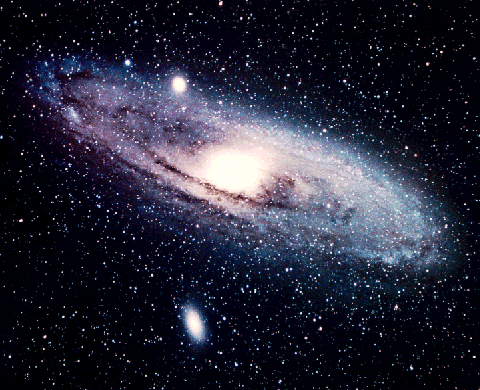
Andromeda
|
Spiral galaxies consist of a nucleus, a
disk, a halo, and spiral arms. Interstellar material such as gas and dust are found
in and near the spiral arm structure in the disk of the galaxy. This is a picture of
the nearest large spiral galaxy, Andromeda. |
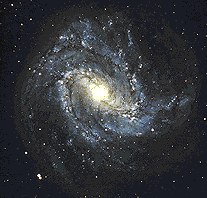
M 83
|
The spiral arms are sites of star
formation, which typically contain young, bright stars. An example is Galaxy
M 83. |
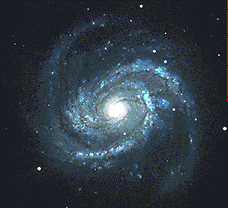
M 100
|
Our own Galaxy is a spiral. Spirals
that are face-on towards us appear like giant pinwheels, like Galaxy M 100. |
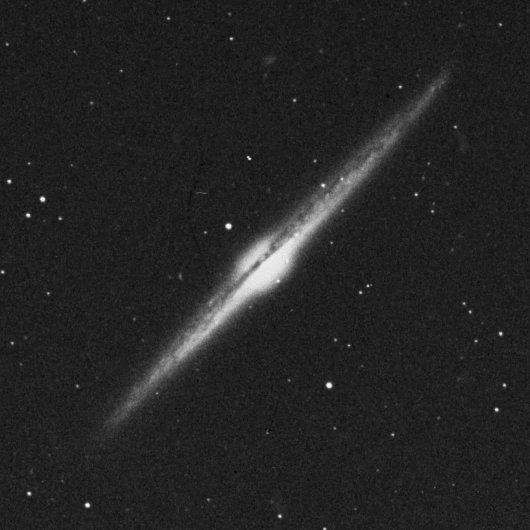
NGC 4565
|
With other galaxies, we can only see
the outer edge. This image shows Galaxy NGC 4565 edge-on. |
Spiral galaxies, like our own Milky Way, contain
hundreds of billions of stars (many like our Sun), gas, and dust. They stretch
across a hundred thousand light years of space. Each star or gas cloud revolves
around the center of a spiral galaxy in its own unique orbit, which takes typically a
hundred million years or more to complete. Most of the stars and gas clouds in a
given spiral galaxy are revolving in nearly the same direction. This gives the
galaxy the appearance of a flattened, spiral disk, which contains most of the stars and
gas clouds. Most spiral galaxies are actively forming new stars within the coldest,
densest, and dustiest clouds. They appear to be converting their gas supply into new
stars at rates they can sustain for many billions of years. However, not all
galaxies are forming stars.
Elliptical Galaxies
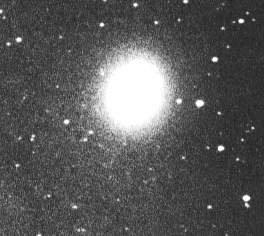
M32
|
As their name suggests, elliptical galaxies have
elliptical or spheroidal like shapes. |
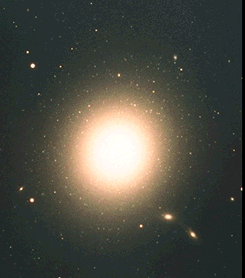
M87
|
The majority of their stars are old,
and they have much less dust and gas than the spirals. Most have not formed stars
for billions of years. |
Elliptical galaxies often appear as spherical or
football-shaped collections of stars that are nearly devoid of gas and dust (compared to
spiral galaxies) and most have not formed stars for billions of years.
[Next]
Last Updated: 12/2/98





